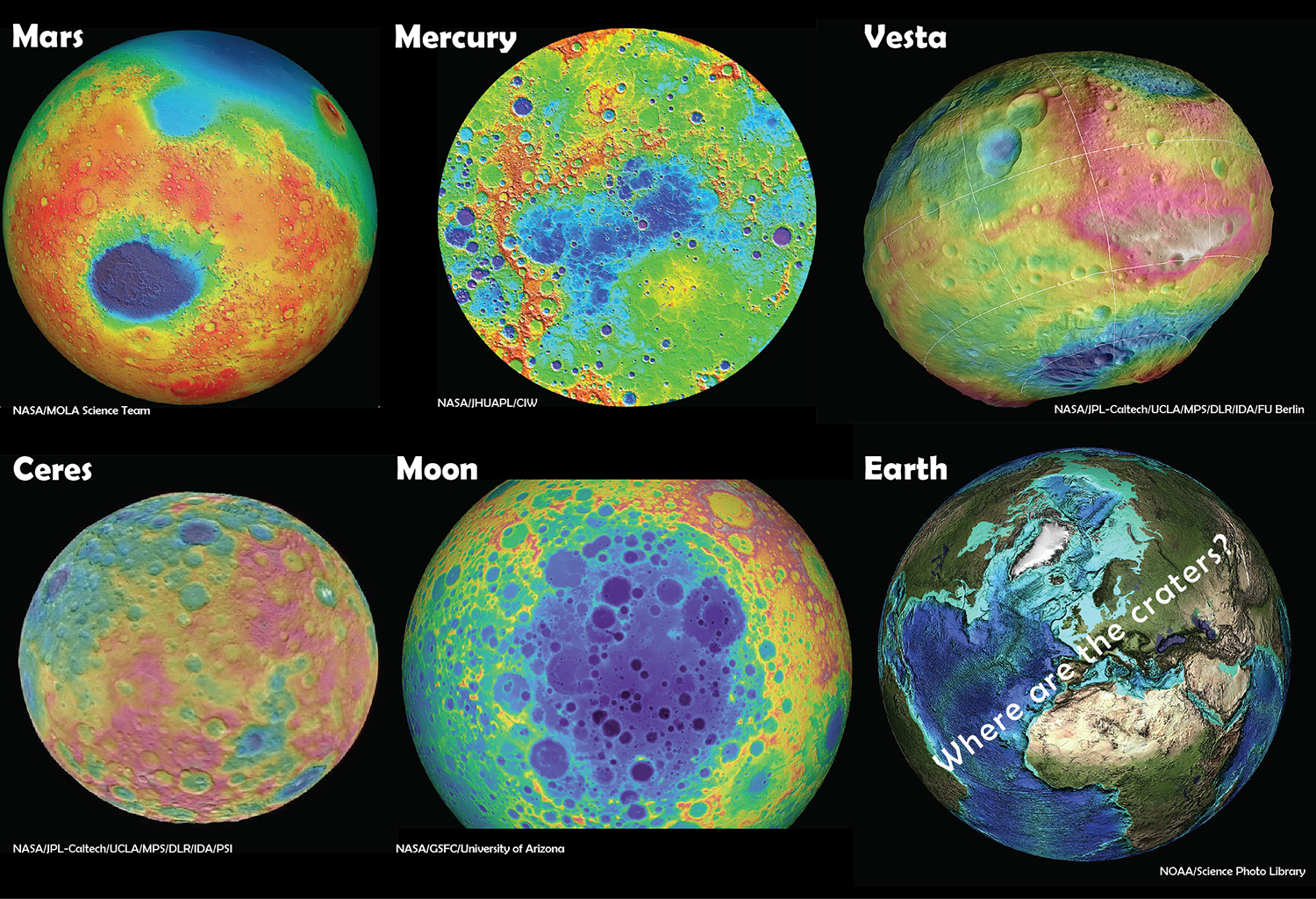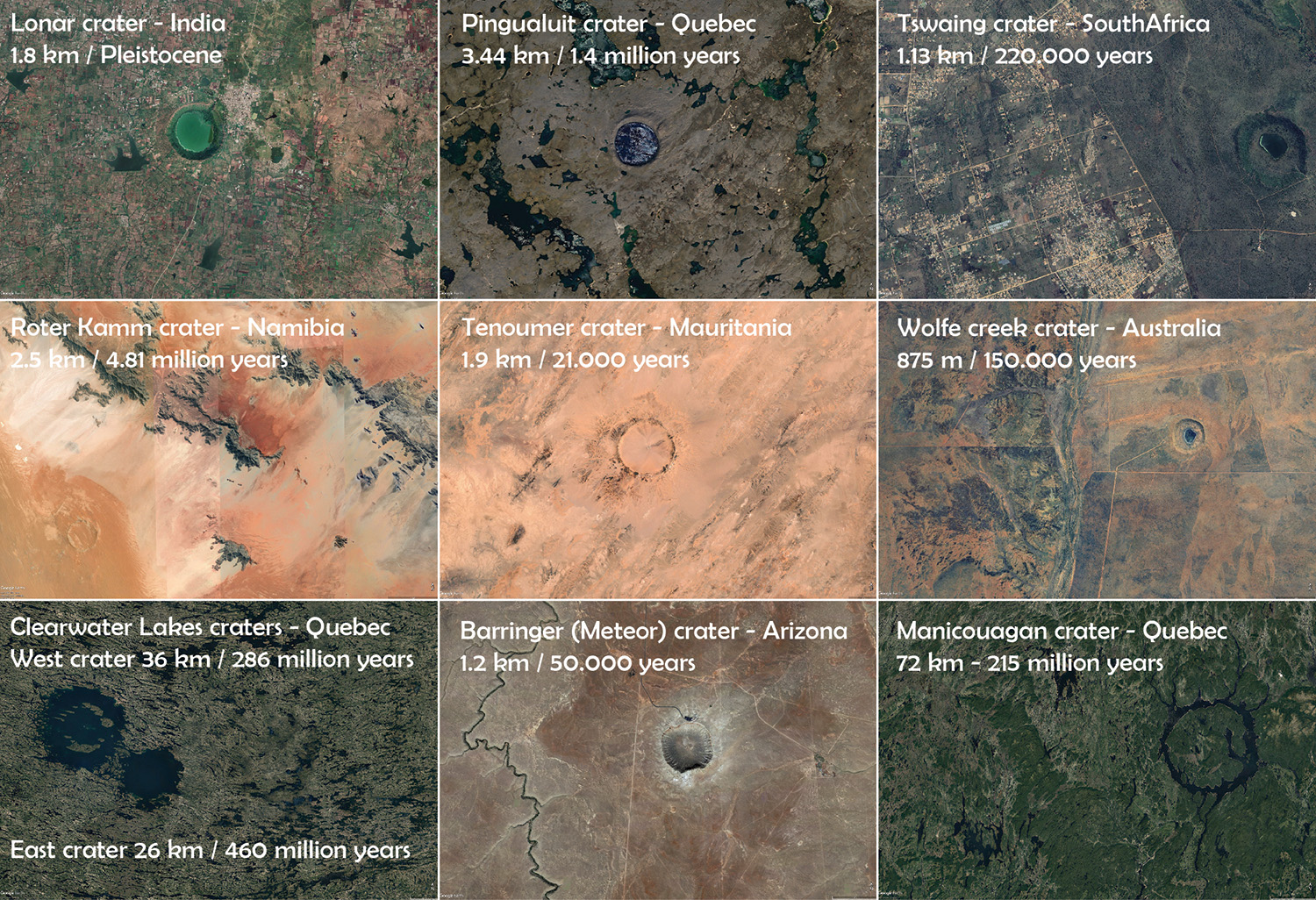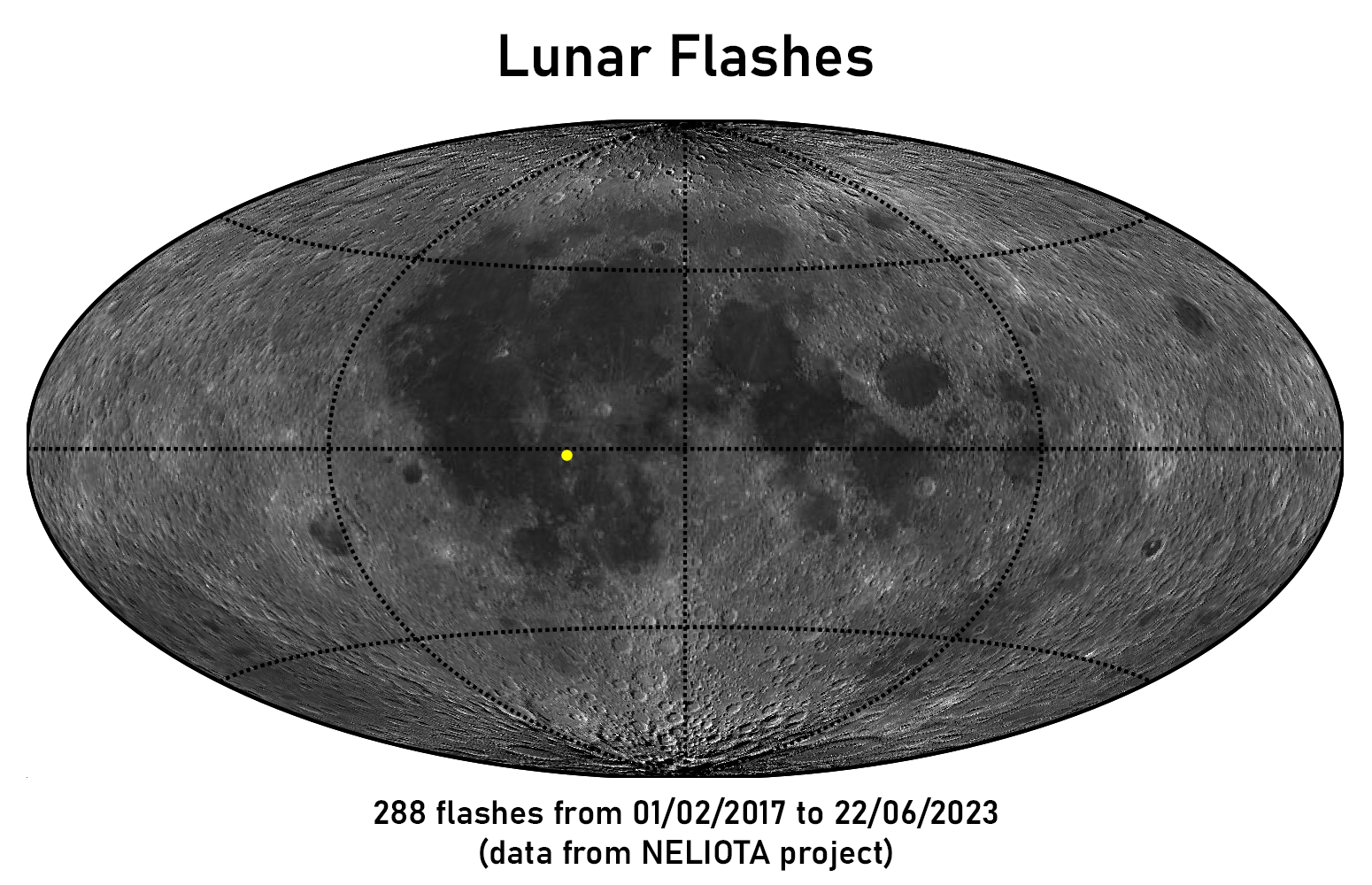

January 04, 2024
Impact cratering is the most fundamental geological process in the Solar System. It is a process that causes both destruction and development, from the accretion and formation of planetary bodies to the shaping of planetary landscapes to the effects on biological evolution.
Impact craters are the dominant element of the landscape (an element of the landscape is called landform) on the Moon, Mercury, Ceres, Vesta, the southern hemisphere of Mars, and many of the satellites of the giant planets in the outer Solar System. However, on Earth, they are not.

The Earth is a very dynamic planet: plate tectonics, sedimentation, erosion, weathering, they all contribute to reshape the landscape and maintaining it young compared to other planetary landscapes in the Solsar System. Simply put, the older is a surface, the longer is exposed to impact cratering, accumulating craters over time. So, a younger surface will have less craters.
Additionally, Earth's atmosphere is operating as shield and filter, protecting us from space rocks (called meteoroids) heading towards our planet. This may give the false idea that impact cratering is an ancient process that does not affect our planet anymore -"And some things that should not have been forgotten were lost. History became legend. Legend became myth" (cit.). But it is very much a present-day process! For example, the Chelyabinsk meteor was the latest, documented, largest meteor event. The 18-meter in size space rock entered the Earth's athmosphere on 15th February 2013 and (luckly) exploded before it could touch down, creating a large shock wave (watch here a compilation of the best shots of the event).

So, how can we study a process that is so fundamental? We can rely on our planetary neighbors, Mars and the Moon, for which we have a fantastic temporal imagery dataset. High-resolution cameras on board the Mars Reconnaissance Orbiter (MRO) and the Lunar Reconnaissance Orbiter (LRO) have been sending back repeated coverage of the martian and lunar surface since 2007 and 2009, respectively. These images have allowed to identify present-day surface changes on Mars and the Moon, including the finding of new impact craters.
On Christmas Eve 2021, the @NASAInSight mission recorded one of the largest ever marsquakes.
— Peter Grindrod (@Peter_Grindrod) April 12, 2023
This is the impact event that caused it.
A rock, probably about 5 m in diameter, travelling at 5 to 15 km per second, formed a crater 150 m across. But the effects went much further. pic.twitter.com/R1N5bdpvuB
Absolutely LOVE looking at new impacts on planetary bodies.
— Peter Grindrod (@Peter_Grindrod) September 15, 2023
This one is on the Moon, as seen by the LROC-NAC instrument, and happened in 2012.
The new crater is about 70 m across, and would definitely hurt. pic.twitter.com/EAaHQfTNkA
The studying of the Moon provides an incredible opportunity to understand the fundamental of impact cratering, essentially in our own backyard. The Moon records the bombardment history in our corner of the Solar System, which is not well preserved on our planet. When we study the Moon, we look back to the impacts that occurred billions of years ago but also the impacts that occur today. In this way, we are actually also looking at a window into the Earth's ancient past and present-day. The video below explains how these new craters are found with LRO high-resolution camera (called LROC NAC).
More than 200 new impact craters have been discovered using LROC images (watch the YouTube video below to learn how NASA scientists did it), form the beginning of the mission to 2016 (7 tears), and this is more than expected from the models of current impact rate (you can read more here).
There are several projects that aim at assessing the current lunar impact rate. One of them is the ESA-funded NELIOTA project, which has started in 2017 and detects lunar flashes using an Earth-based telescope operated by the National Observatory of Athens and located close to the Greek town of Kryoneri. On the webpage of the project, the database of lunar flashes is regularly updated and free for download. Below is a gif I have generated using the NELIOTA database updated to June 2023.

Understanding the present-day impact rate has several important implications, which go beyond the mere (yet fundamental!) scientific merit: first of all, it will allow us to understand how frequently our planet could be affected by meteoritic impacts, the statistic of the size of these objects, with consequences on our defensive strategies; secondly, and similarly, understanding the risk for future astronauts and lunar infrastructure. In summary, we are buying down risk for the permanence on Earth and for future lunar explorers.